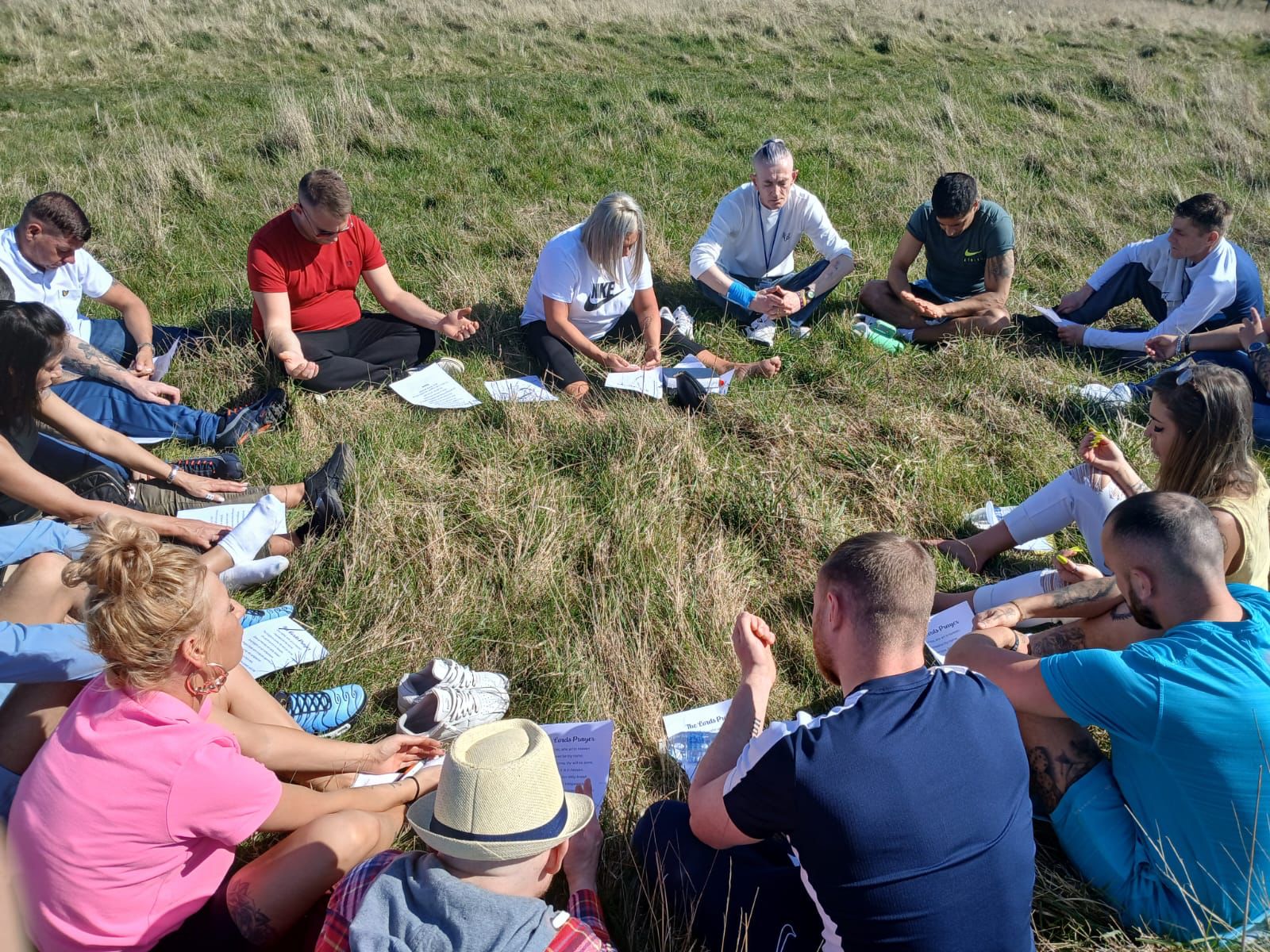Invoking a balance between change and acceptance
AA Serenity Prayer
These simple words ring clear in the hearts and minds of Alcoholics Anonymous members all over the world:
“May God grant me the serenity to accept what I can’t change, the courage to change what I can, and the wisdom to know the difference.”
This famous AA prayer is an excerpt from a more extended prayer widely attributed to the American theologist Reinhold Niebuhr.
Although its origins are unclear, its consequences are not. The prayer perfectly expresses the central issue of addiction and offers a timeless solution.
The Serenity Prayer is a focal point for the spirit of AA, anchoring its members to its core teachings of surrender and acceptance. We have included the entire Serenity Prayer below and an examination of its history, meaning, and significance so that we can all carry its lessons to heart and transform common difficulties into calming surrender.
The message and lessons of the Serenity Prayer are helpful to everyone, not just those in recovery from addiction.
The Full Serenity Prayer
The full text of the original prayer is:
God grant me the serenity
To accept the things I cannot change;
Courage to change the things I can;
And wisdom to know the difference.
Living one day at a time;
Enjoying one moment at a time;
Accepting hardships as the pathway to peace;
Taking, as He did, this sinful world
As it is, not as I would have it;
Trusting that He will make things right
If I surrender to His Will;
So that I may be reasonably happy in this life
And supremely happy with Him
Forever and ever in the next.
Amen.
The Serenity Prayer and Twelve Steps
Members of Alcoholics Anonymous have widely accepted and embraced the Serenity Prayer as part of the Twelve Steps recovery process. These 25 words are heard at nearly every AA meeting and are widely regarded as a concise statement of a path to sanity, serenity, and sobriety.

Spiritual origins
The Serenity Prayer perfectly complements the spirituality of Alcoholics Anonymous’ Twelve Steps. While the Serenity Prayer is thought to have originated in Christianity, it can be applied to daily life regardless of religion or spiritual beliefs. Support groups use several versions of the Serenity Prayer, each with slightly different wording. The full Serenity Prayer text contains more religious overtones.
There are also conflicting accounts about the prayer’s origin. The Serenity Prayer has been attributed to an ancient Sanskrit text, Aristotle, St. Augustine, and St. Francis of Assisi, among others.
Many AA members first learned about the prayer in 1948, published in the Grapevine, an AA periodical. There, it was attributed to American theologian Reinhold Niebuhr (1892–1971). The Serenity Prayer spread through Niebuhr’s sermons and church groups in the 1930s and 1940s before being adopted and popularised by Alcoholics Anonymous and other twelve-step programmes.
Living the Serenity Prayer in Recovery from Alcoholism and Drug Addiction
For many people, the first verse of the Serenity Prayer serves as a daily reminder that to achieve serenity, we must approach each moment wisely and courageously. The Serenity Prayer accurately expresses a fundamental problem with addiction and proposes a timeless solution.
The prayer’s message of acceptance is similar to that of Bill W., cofounder of Alcoholics Anonymous. In the book Alcoholics Anonymous (Big Book), published by AA World Services, Bill described the core trait of alcoholics as self-centeredness—what he called “self-will run riot.” “an actor who wants to run the whole show; is forever trying to arrange the lights, the ballet, the scenery and the rest of the players in his own way.” Bill’s solution: “First of all, we had to quit playing God.”
The problem of control
Some alcoholics and addicts are unable to achieve serenity due to their intense desire for absolute control, which is simply impossible for humans. This desire for power has two aspects: The first is an attempt to control the behaviour of others, a strategy that people with an addiction hold onto despite its repeated failure. The second is an attempt to control emotions by drugging them with mood-altering chemicals. This strategy, too, is destined to fail.
An alcoholic’s desire for complete control can cause misery, which may contribute to substance abuse problems. Ironically, the desire for control may be a reaction to the unmanageability caused by their out-of-control drug use. And the vicious cycle continues until the person with an addiction accepts that external circumstances are unchangeable. The prayer instead directs us to examine our inner life: We cannot directly control our emotions. However, we can influence our feelings by controlling our thoughts and actions. By focusing on these two factors, we can achieve the Serenity Prayer’s final promise: courage.

Gateway to a lifetime of serenity
The Serenity Prayer is a wide door that welcomes people of all faiths and backgrounds. It speaks wisdom to both addicts and non-addicts. People practising this prayer learn to maintain a dynamic balance between acceptance and change. This priceless gift will give us serenity, peace, and spiritual growth for the rest of our lives.
If you or your loved one is struggling with addiction-related issues, call Freephone at 0800 140 4044
Freephone: 0800 140 4044
Local rate: 0300 330 3040

